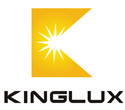|
The lens is used to distribute light to the light source. The precision of light distribution is the standard for testing the lens. Our company kinglux has a professional light distribution team and equipment, with 10 years of light distribution experience and experience in lamp structure design, as well as a batch. Skilled optical worker. Pay attention to the design and production process of products, especially the strict control of product quality.

Why produce glass lenses instead of PC? Because the PC lens has poor temperature resistance, low light extraction rate (85%), and electrostatic phenomena on the surface, the surface is easy to adsorb dust and reduce light transmittance. For integrated light sources, the high temperature of the light source will bake the surface of the PC lens, further affecting the light transmittance. The glass lens has high hardness, small thermal expansion coefficient, long service life, and the light extraction rate can be 92%, so the prospect of future development is broader.
Let's talk about the processing technology and production process of LED glass lens:
(1) Mold processing.
(2) Mold polishing.
(3) L-1 loading glass rod: The size of the raw material corresponding to the product model selection and the pipe fittings are placed in the loading area.
(4) L-2 softening: Place the installed bar on the heating rack, push the melting furnace, and soften it.
(5) L-3 stamping: The burned bar is placed in a mold for punching, and the air gun is used to cool the die.
(6) L-4 annealing: The pressed product is placed in a conveyor belt and sent to an annealing furnace for annealing.
(7) L-5 knocking edge: Take out the product in the annealing furnace and knock out the excess burrs.
(8) L-6 coarse grinding: adjust the coarse grinding machine according to different products, put the product into the coarse grinding machine, rough grinding the solid side of the product, and rough grinding to the required thickness.
(9) L-7 inverted: According to the different products, the artificial edge and the machine are inverted, and the real side of the product is inverted.
(10) L-8 fine grinding: adjust the refiner according to different products, put the product into the refiner, and finish the rough grinding surface.
(11) L-9 polishing: The polishing machine is adjusted according to different products to polish the polished surface of the product.
(12) L-10 inspection: Put the product into the ultrasonic cleaning machine, clean it with nylon cloth, place the product under the incandescent lamp, and classify the product according to the quality of the product.
(13) L-11 packaging and storage: Wrap the product with wrapping paper, and put the product into the corresponding packaging box for sealing and labeling. The packaged products are invented into the warehouse and placed in the corresponding product area.
With such a process going down, a complete lens can be counted.
Choose LED glass lens, please choose kinglux glass lens, you will enjoy the best quality and best service.

|


